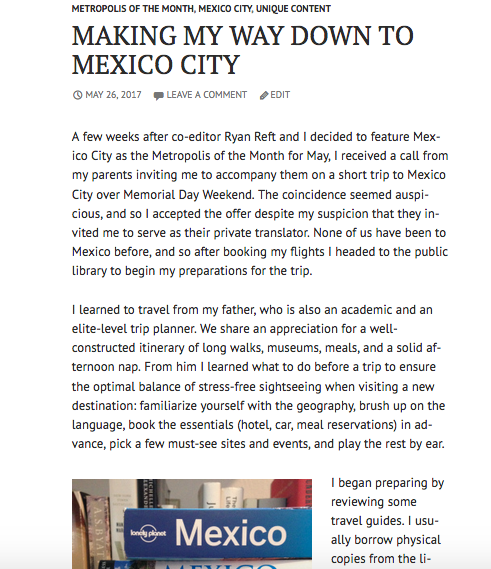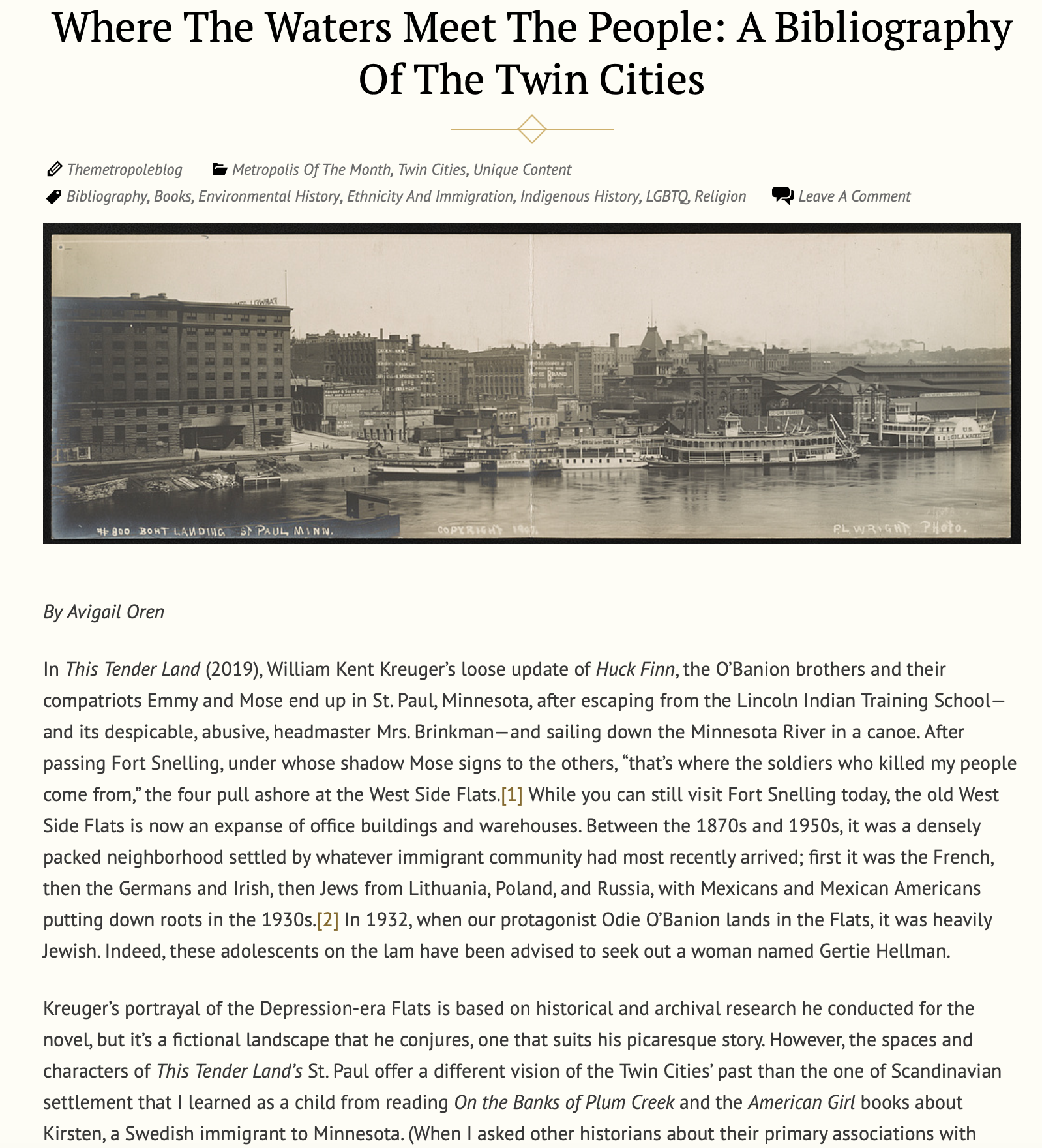Selected Writing
“An Ode to Saying No,” The Metropole, 2022.
“This Neighborhood Isn’t For You Anymore: A Conversation about WESA’s New Podcast, Land and Power,” The Metropole, 2021.
“An Outsize Impact — A Review Of Cleveland Jews And The Making Of A Midwestern Community,” The Metropole, 2021.
“Where the Waters Meet the People: A Bibliography of the Twin Cities,” The Metropole, 2020.
“Imposter or Activist: Eight Years in Squirrel Hill,” in Beth Kissileff and Eric Lidji (Eds.), Bound in the Bond of Life: Pittsburgh Writers Reflect on the Tree of Life Tragedy (University of Pittsburgh Press, 2020).
“We Asked Trump to Recognize That Words Matter. His Refusal to Do So Has Led to More Tragedy,” Time.com, 2019. With Jonathan Mayo.
“For Historians, Entrepreneurship Can Be Empowering,” Tropics of Meta, 2018.
“Is a Negro district, in the midst of our fairest cities, to become connotative of the ghetto...?”: Using Corpus Analysis to Trace the “Ghetto” in the Black Press, 1900-1930, in Wendy Z. Goldman and Joe W. Trotter (Eds.), The Ghetto in Global History: 1500 to the Present (Routledge Press, 2018).
Digital History Projects
History Along the Great American Rail-Trail
This digital history project, part of the Rails-to-Trails Conservancy’s TrailLink platform, features 250 stories and points of interests across the United States. As lead historian, I selected stories, oversaw a team of writers, and contributed research and writing. Some of my favorite stories I wrote are:
I was also featured in this article and video about the project.
Building the Great Allegheny Passage
This website records the history of the Great Allegheny Passage (GAP), a 150-mile-long rail-trail between Pittsburgh, Pennsylvania and Cumberland, Maryland. There, trail users can connect to the C&O Canal towpath and follow it southeast all the way to Washington DC. The GAP is built on the old railroad grades of the Western Maryland, B&O, Pennsylvania, Pittsburgh & Lake Erie, and Union Railroads. Building the GAP relies on oral histories, organizational records, newspaper accounts, and other primary sources to record how, in the wake of the abandonment of these railroad lines, groups of committed volunteers (and quite a few industrious state and county employees) came together to build a world-class trail through Western Pennyslvania’s historic coal and steel region.
Between 2019-2020, I conducted 15 oral histories, contributed two articles (on the Bollman Bridge and Linda McKenna Boxx), and edited most of the stories on the site.
The Cornerstone Podcast and StoryMaps
The Cornerstone is a podcast about Pittsburgh’s Jewish history written and produced by Eric Lidji and the Rauh Jewish History Program & Archives at the Senator John Heinz History Center. In season one, each episode focuses on a specific site in the city’s Hill District neighborhood and tells a story that illuminates Jewish migration, settlement, commercial activity, religious life, and communal organization between the mid-19th and mid-20th centuries. For each episode I created an accompanying StoryMap that re-tells the story using the rich archival materials of the Rauh Jewish Archives.
The Metropole, The Blog of the Urban History Association
In 2017, I helped co-found The Metropole, the blog of the Urban History Association, and served as co-editor for six years. I oversaw the publication of over 400 articles and essays, authored 20 posts, coordinated the weekly Member of the Week series for three years, and initiated an annual blogging contest for graduate students. I expanded the editorial staff to include assistant and series editors, implemented and maintained an Airtable content management system, and oversaw hiring and compensation. I also assisted with fundraising, including collaborating on grants and sponsorship proposals.












